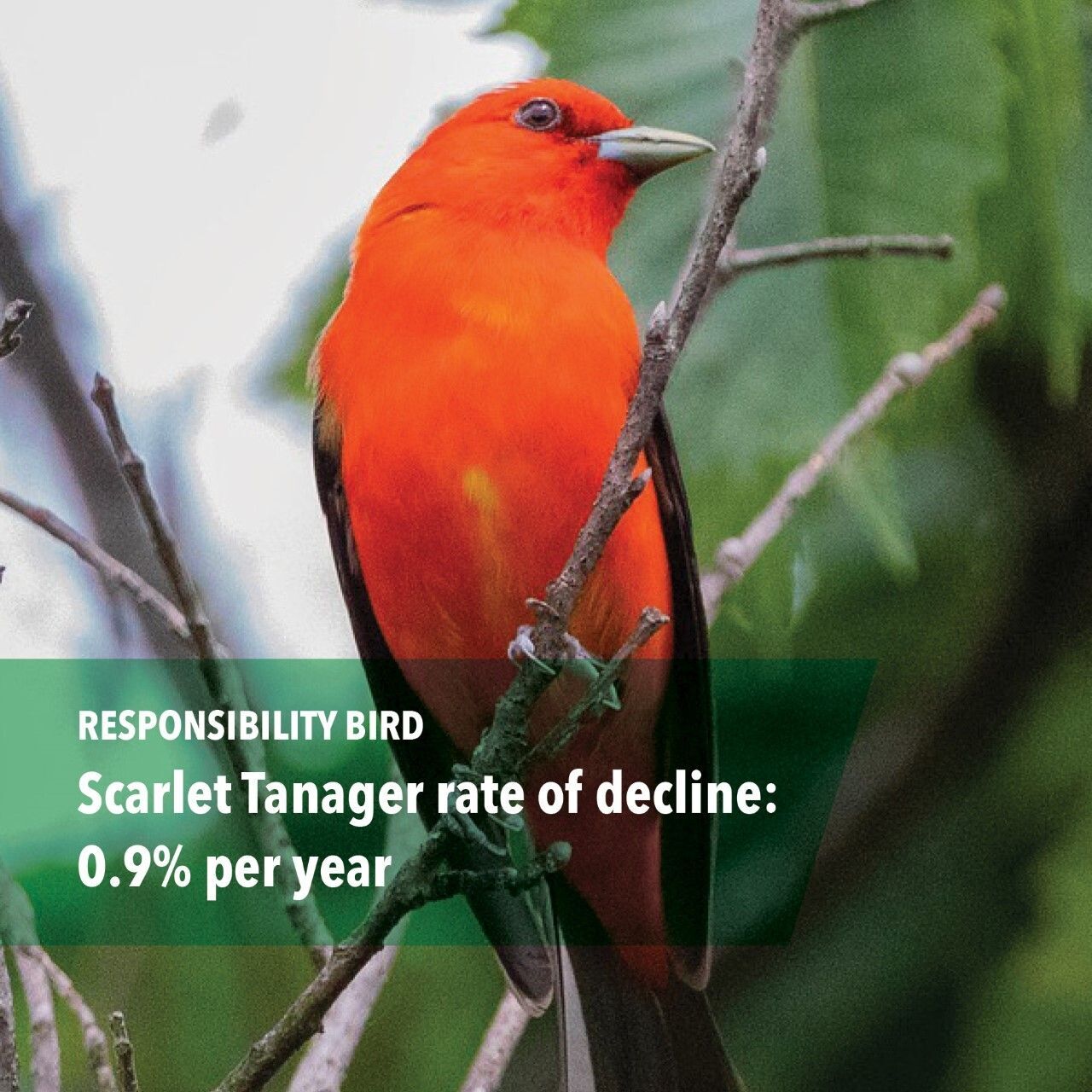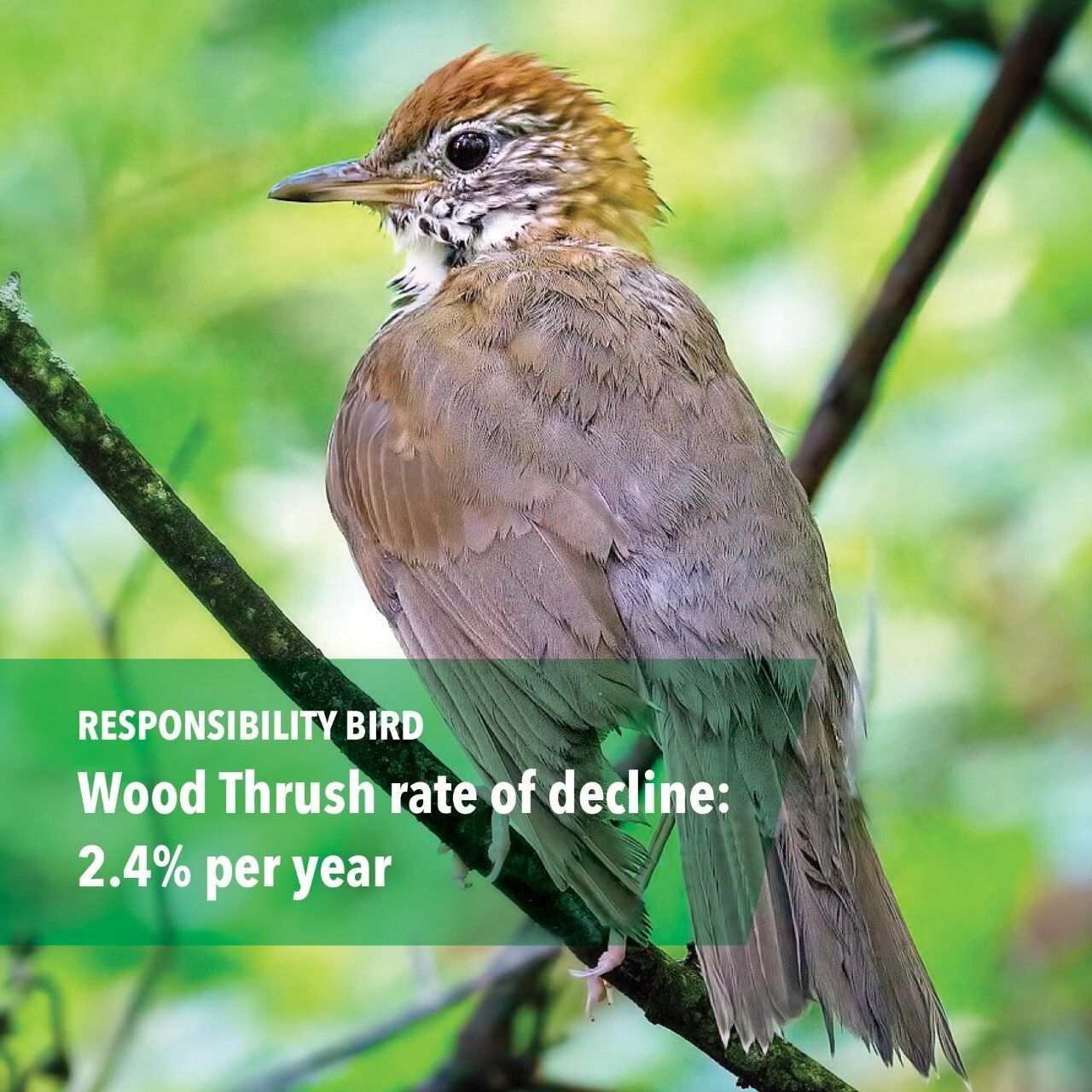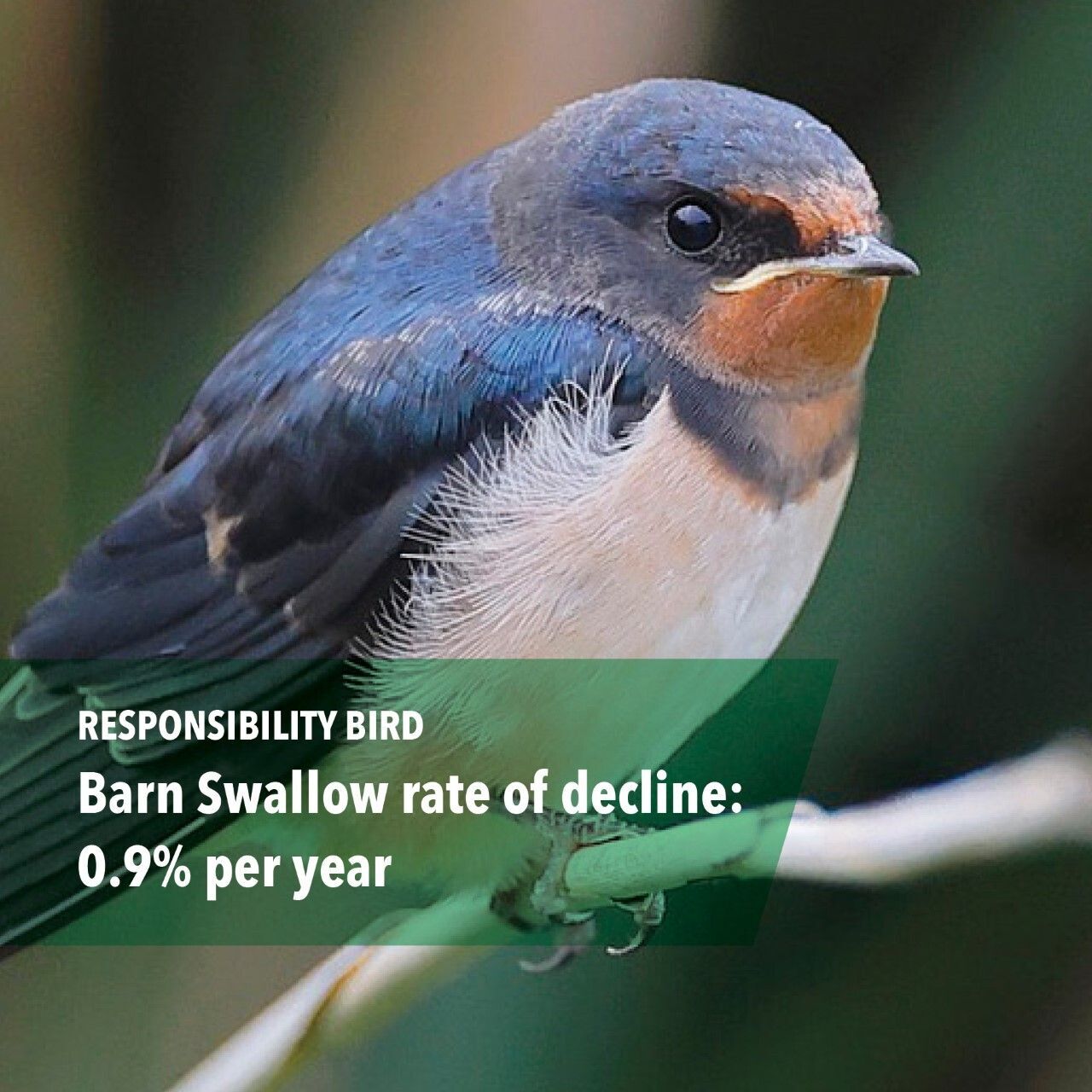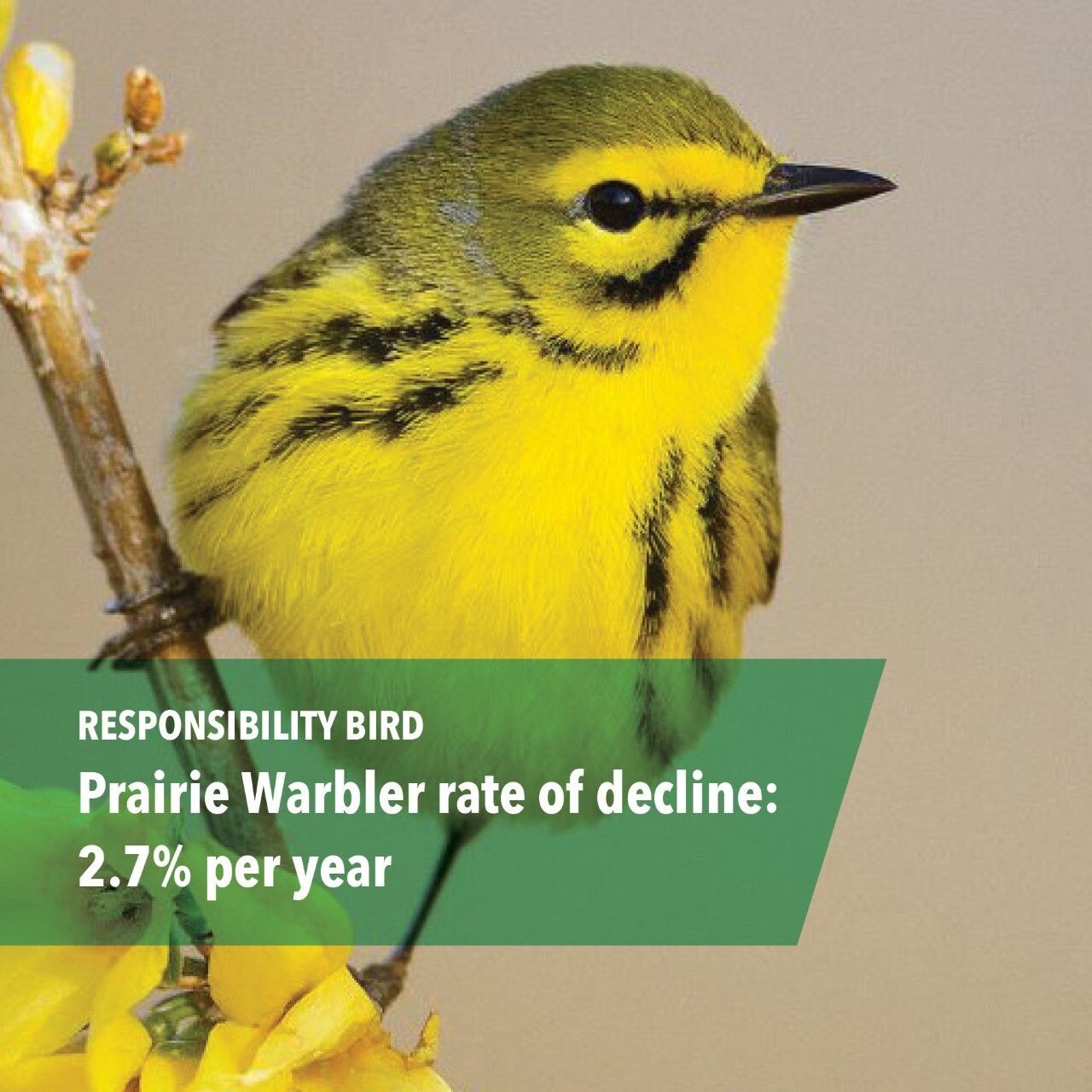Meet Audubon's Responsibility Birds
What is a "Responsibility Bird"?
A major goal of the Audubon State of Our Birds report was to identify species that were candidates for designation as “Responsibility Birds”. The phrase, which was borrowed from VT Audubon, is used for birds that require additional monitoring and management to reverse declines locally or contribute to reversing declines at a larger spatial-scale.
Selection Criteria
Three main selection criteria were adopted to aid in the selection of those species classified as “Responsibility Birds”:
-
Is the species relatively easy to monitor?
As with baseline data collection, the first step in creating a management plan for a given species is to better understand its current population status on our refuges. This requires a monitoring scheme where data can be collected on population size and distribution along with information on productivity (nesting success) and habitat use. As a large amount of data will be gathered by our dedicated volunteers, the species needs to be easy to monitor, with loud and distinct vocalizations and conspicuous habits. - Are there clear, actionable steps that can be taken to promote the species?
Some species are in steep decline due to factors that no amount of management in Rhode Island can address. These include habitat loss along migratory routes or overwintering sites, window strikes or pesticide use. For these species, efforts to bolster breeding populations on Audubon Refuges may not contribute to overall population growth. For other species, steps can be taken on our refuges to increase regional populations.
- Does the species act as an “umbrella species”?
Birds don’t live in a vacuum. Instead, many species occupy similar spaces in nature, eating similar foods and nesting in similar locations. In this regard, conserving a given species may indirectly lead to the conservation of other birds with similar habits. This is the umbrella species concept: that conserving some species indirectly conserves others.


























